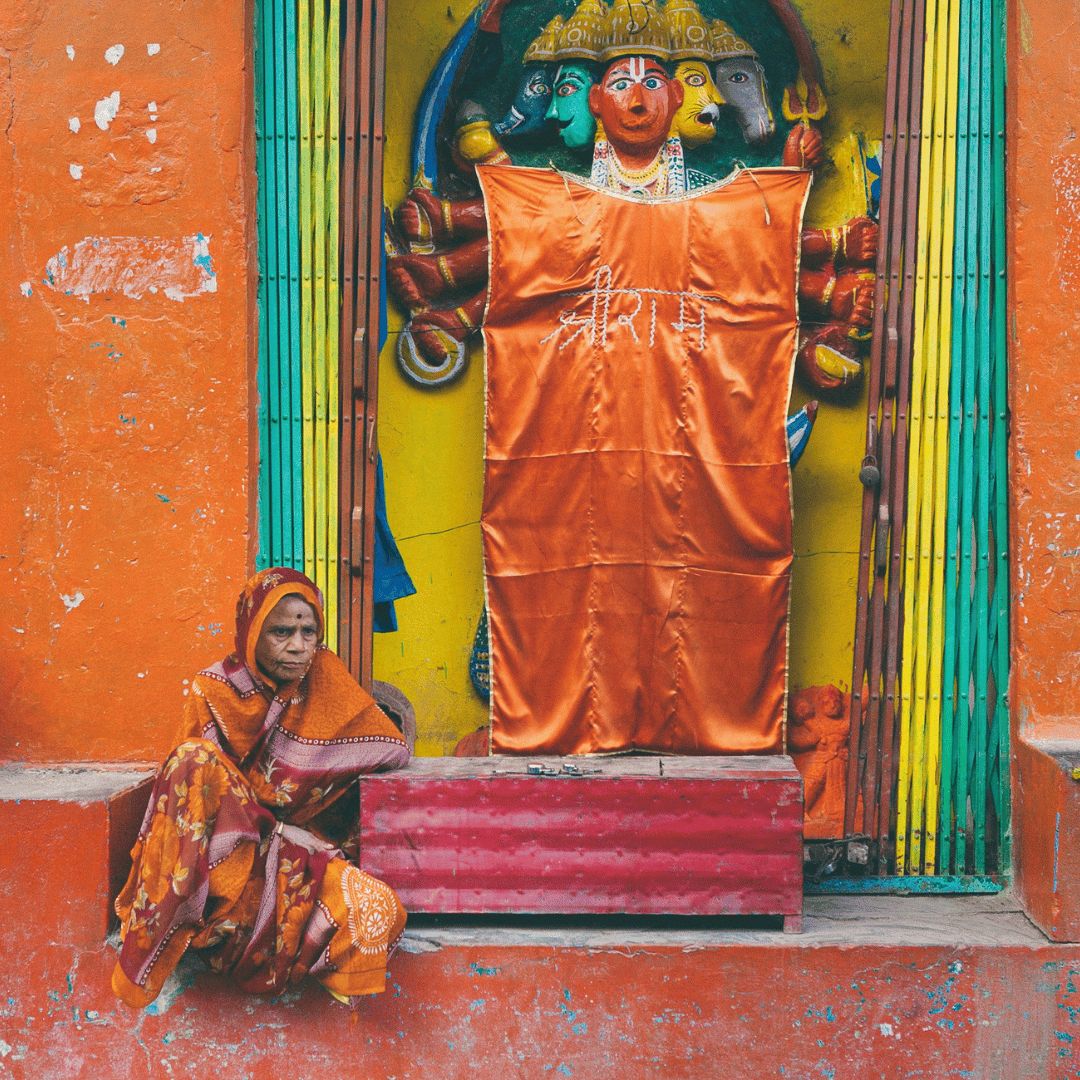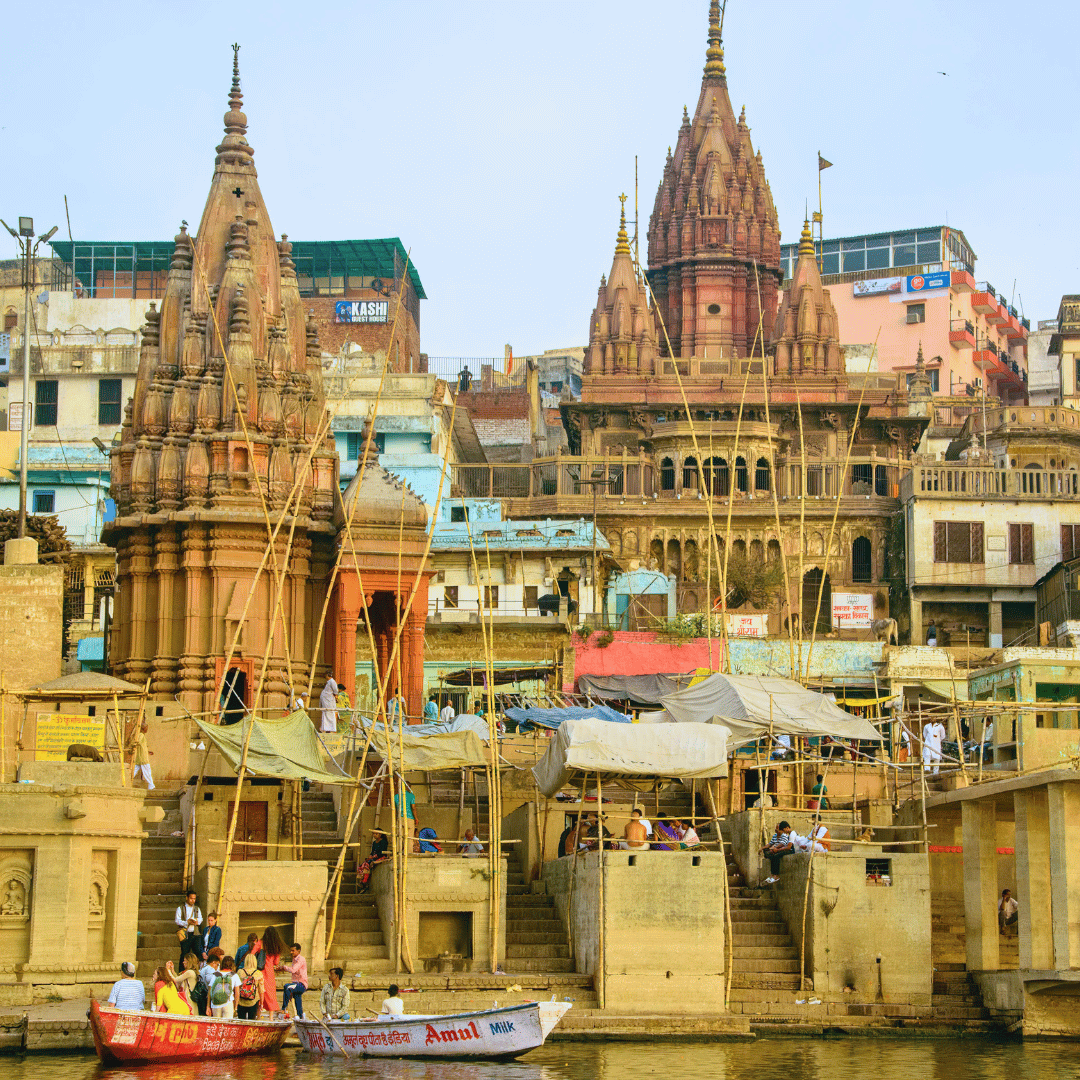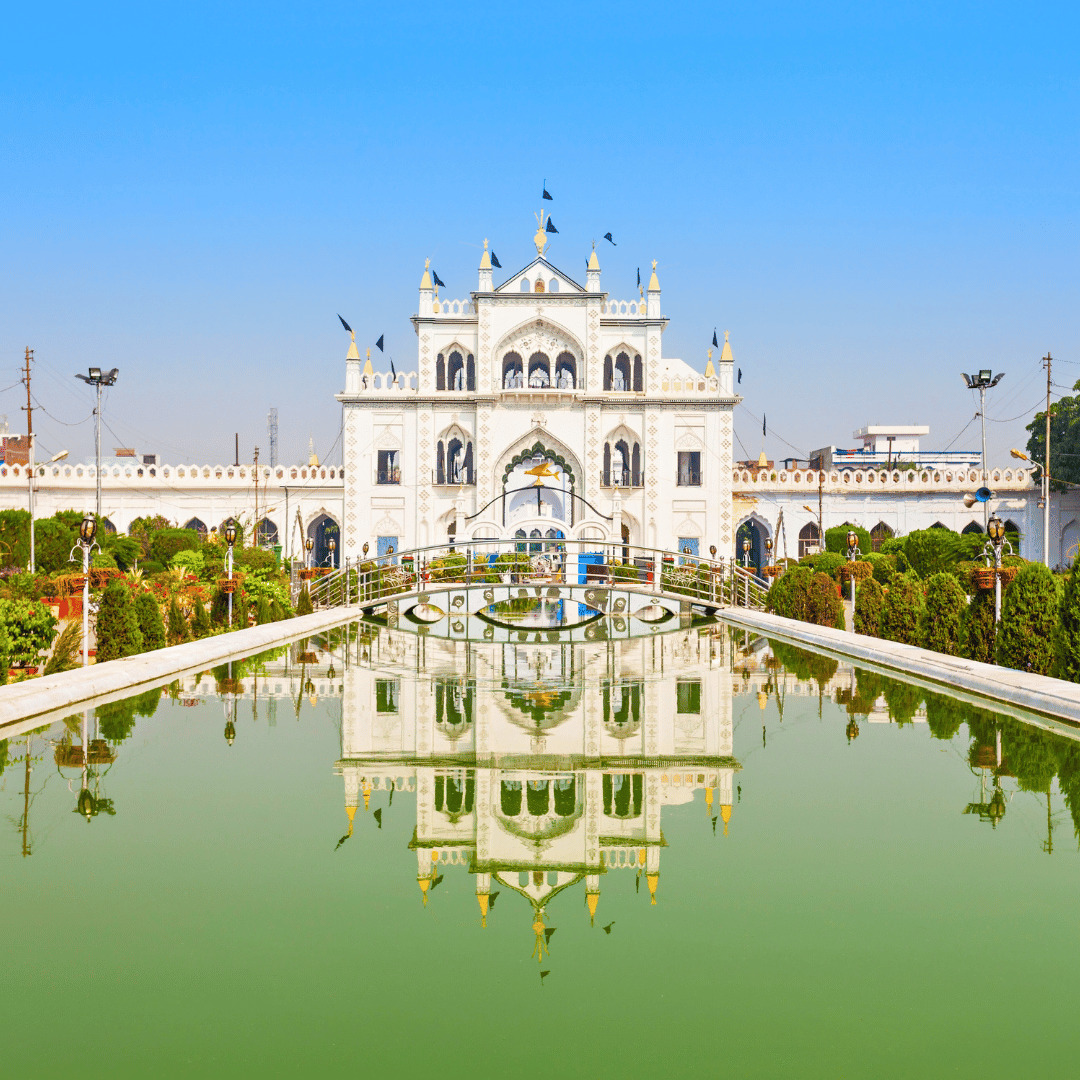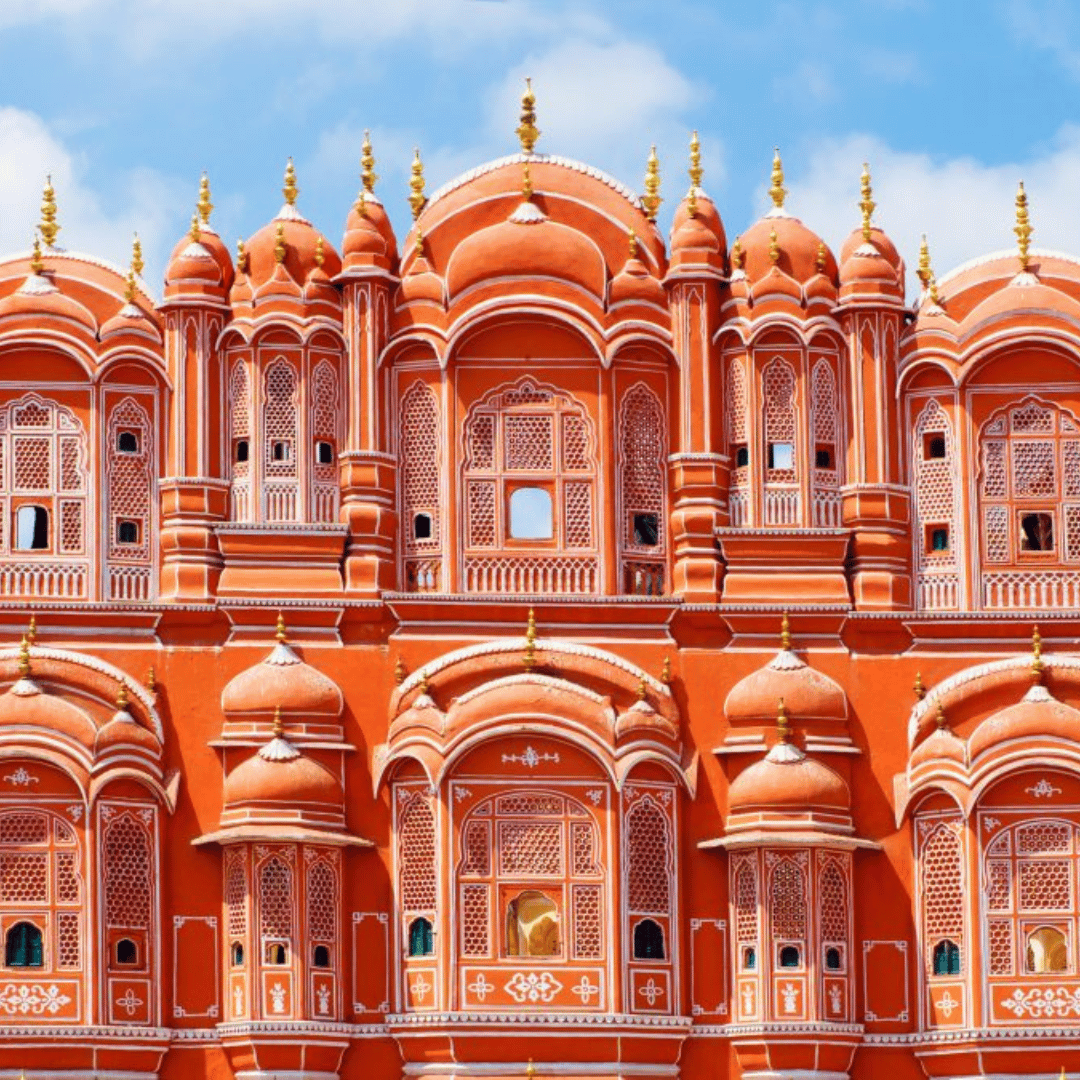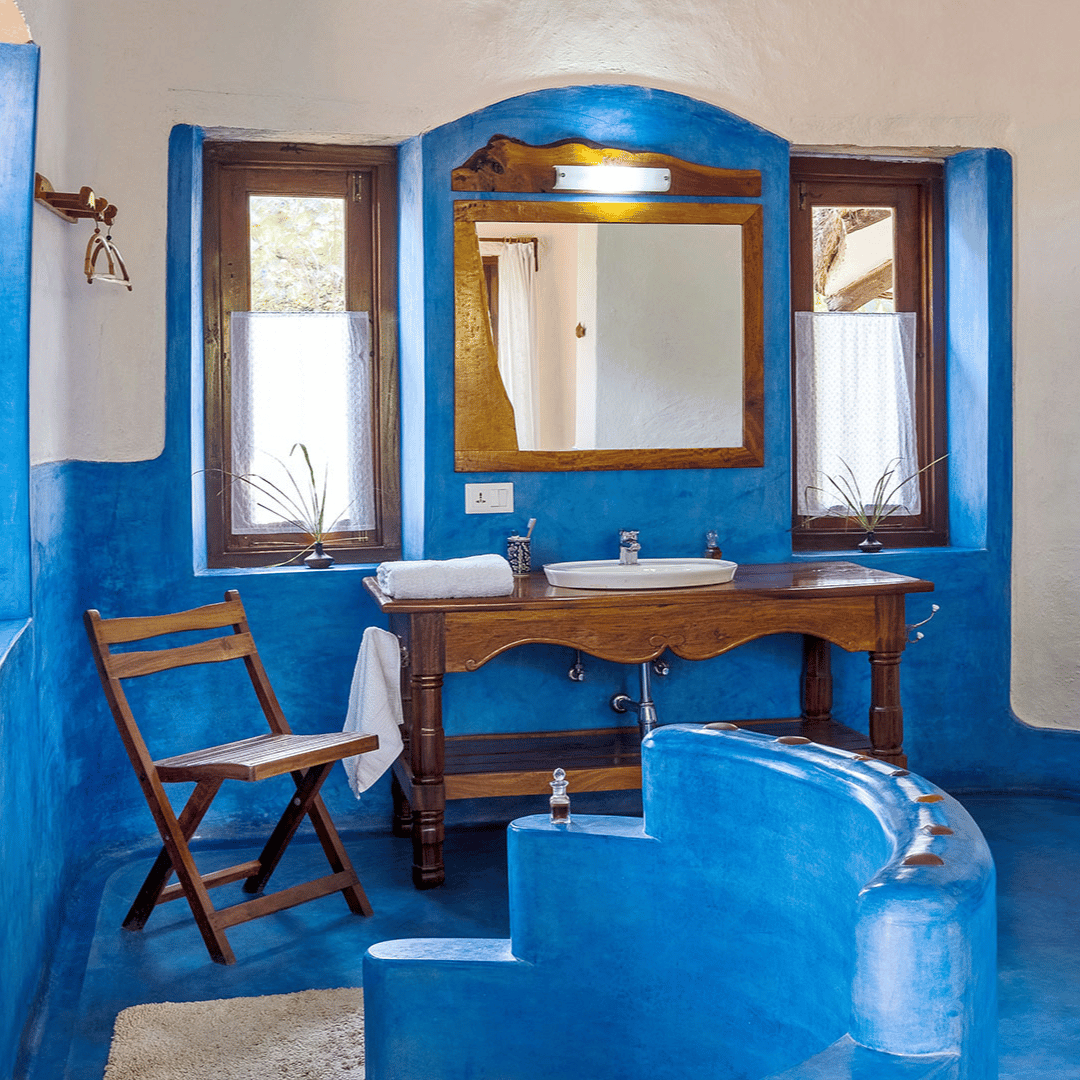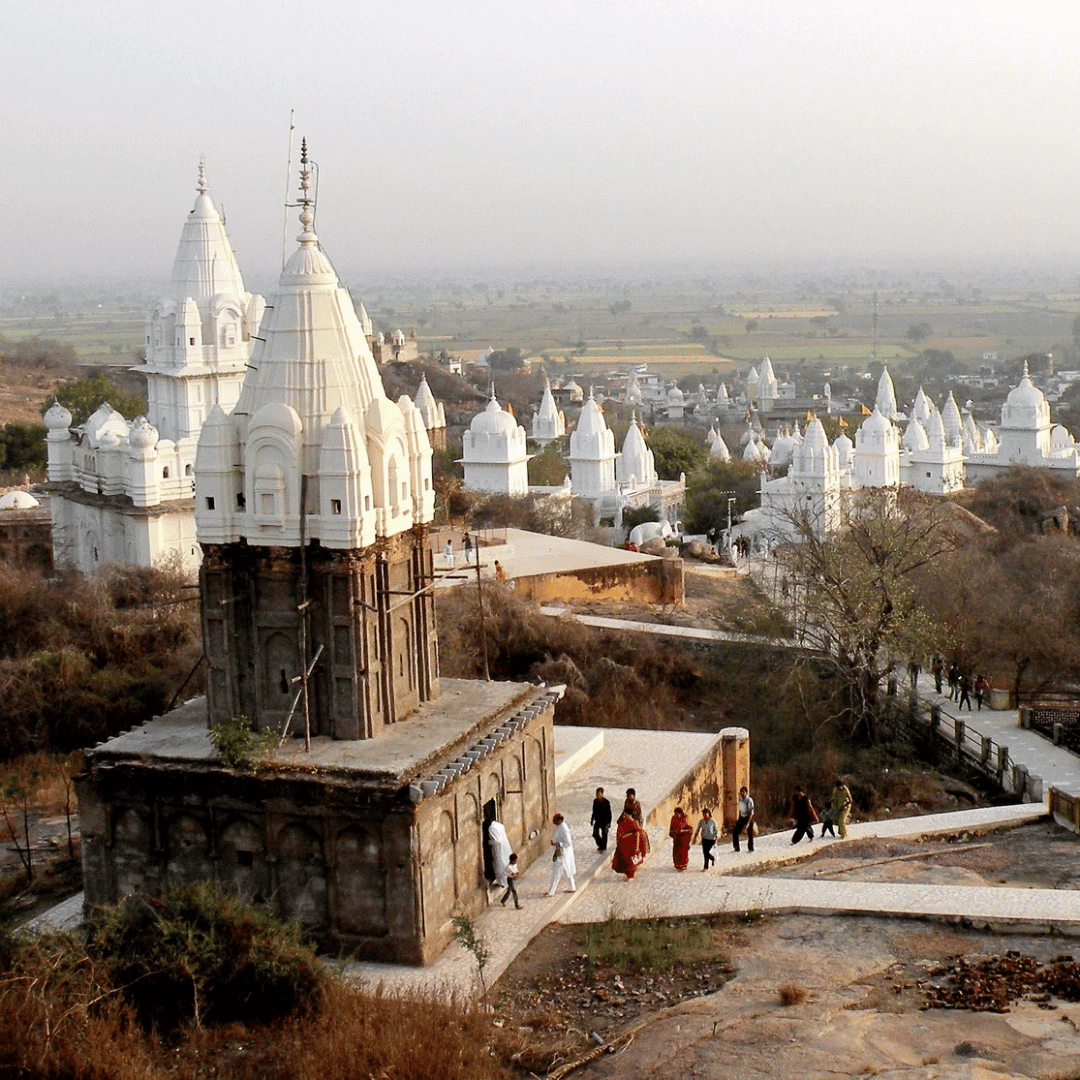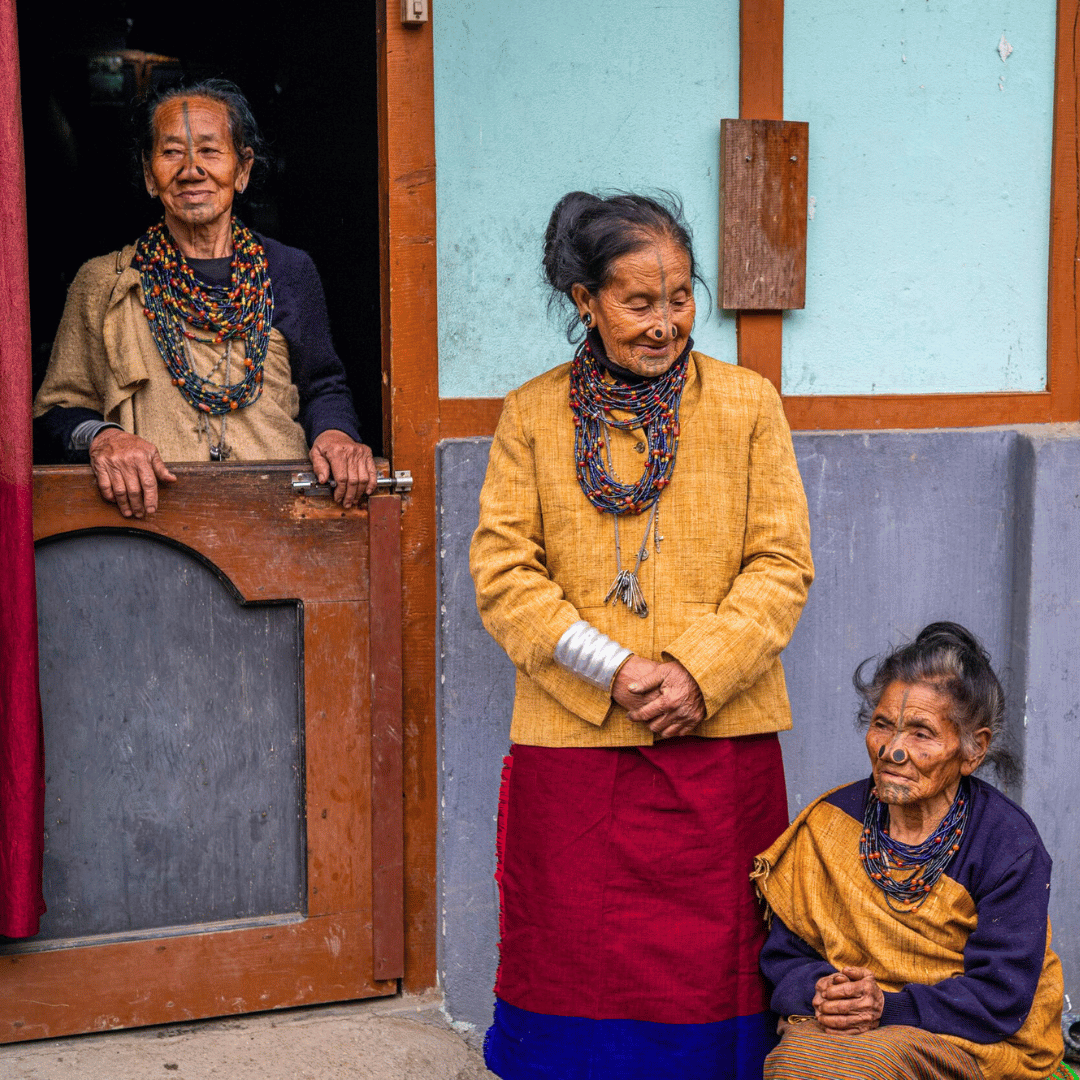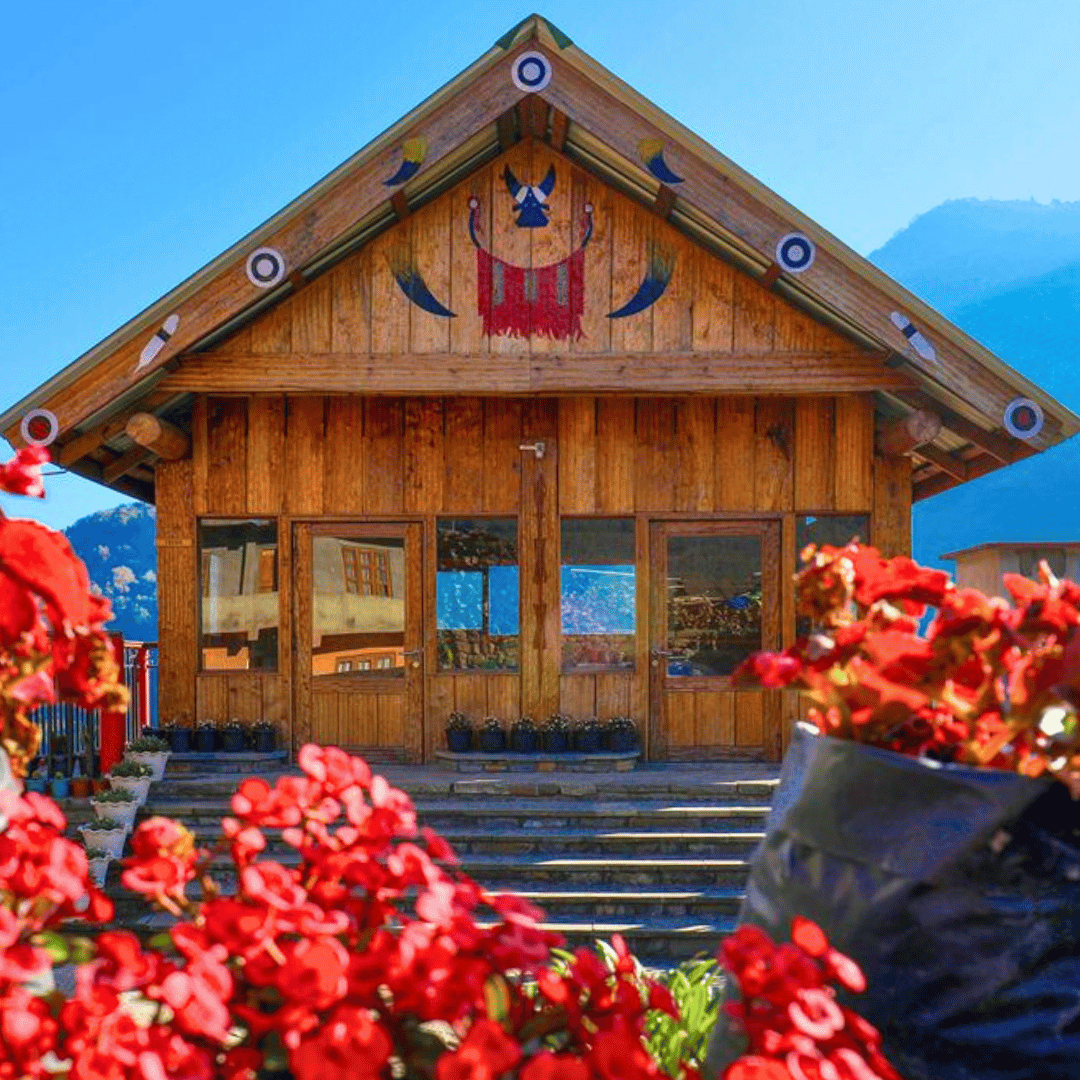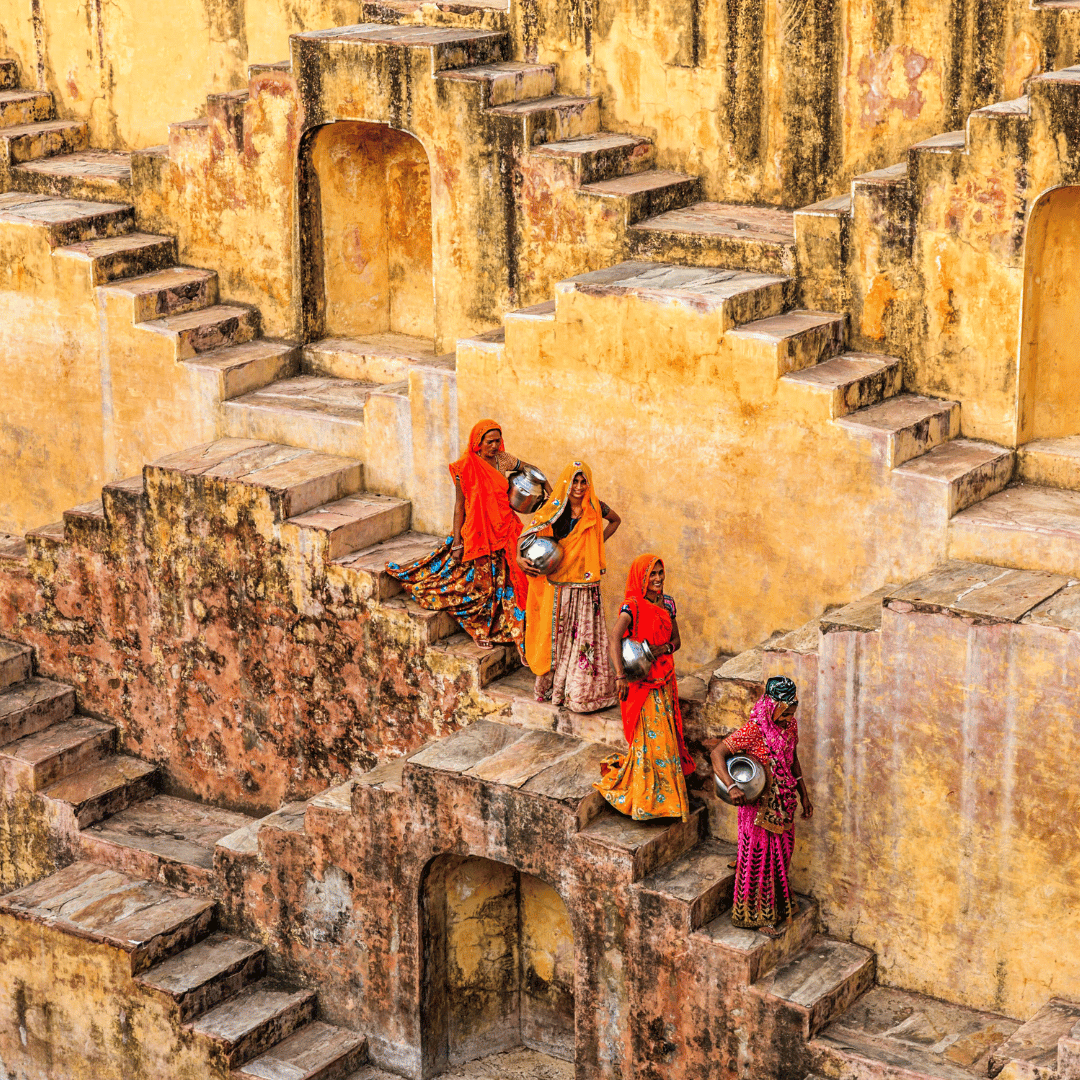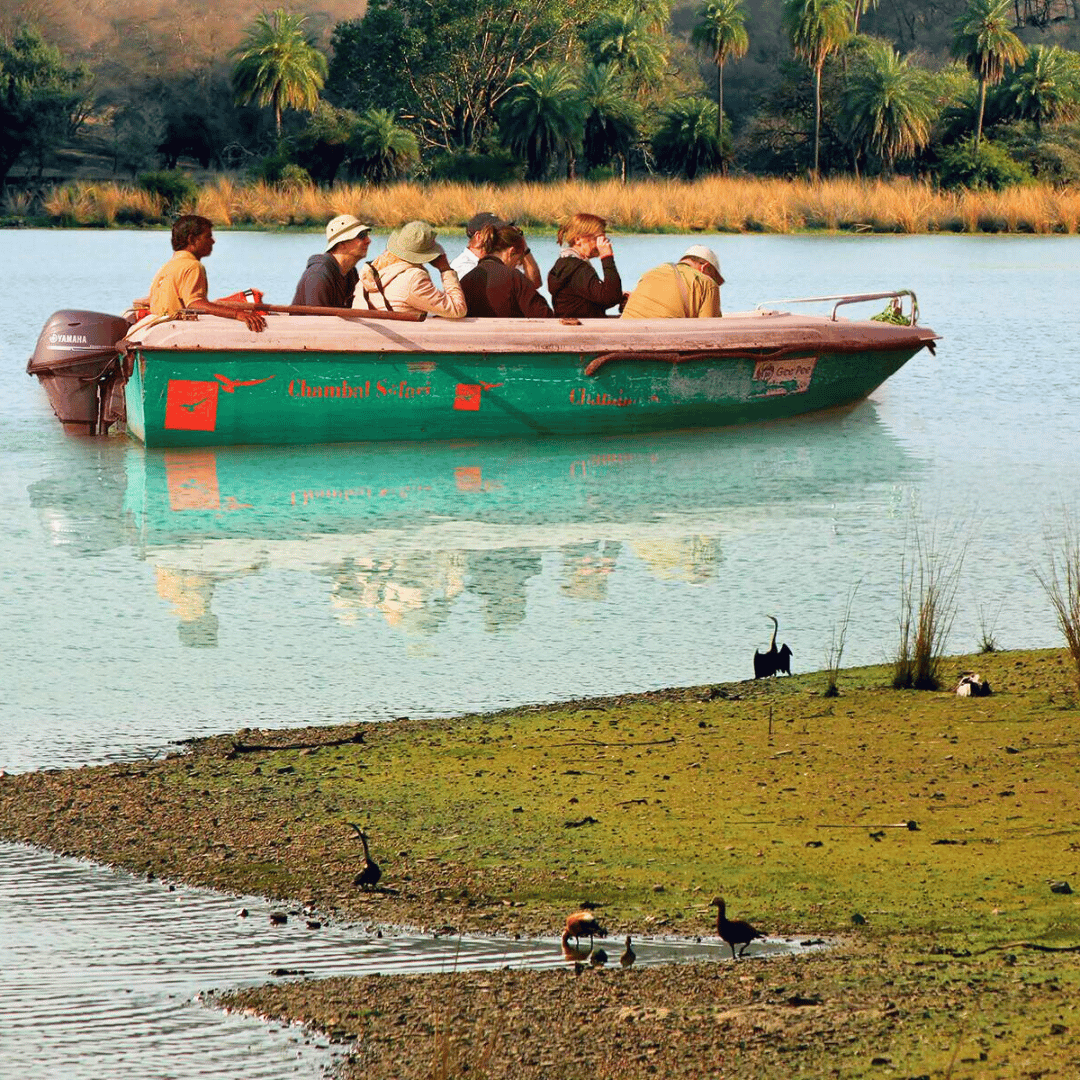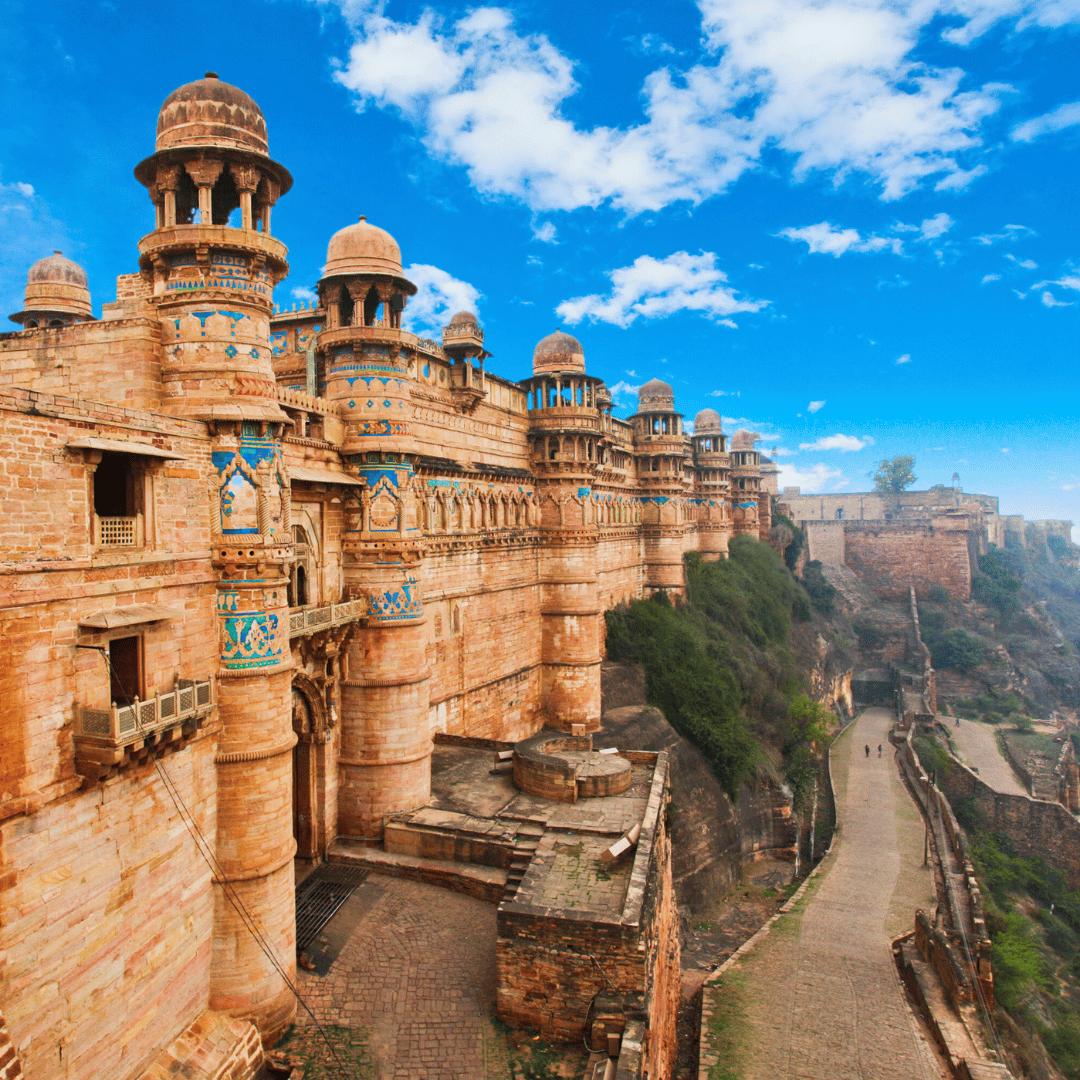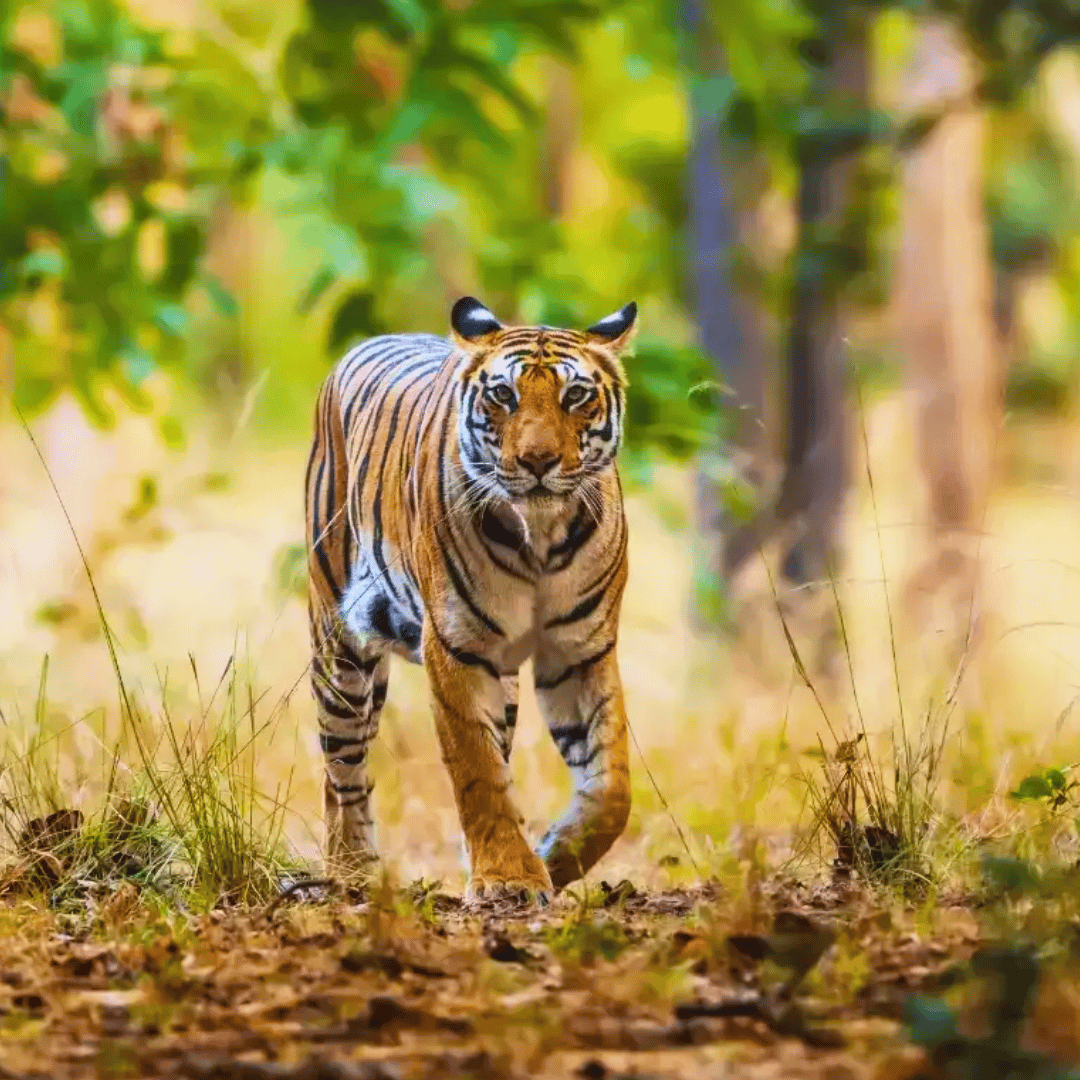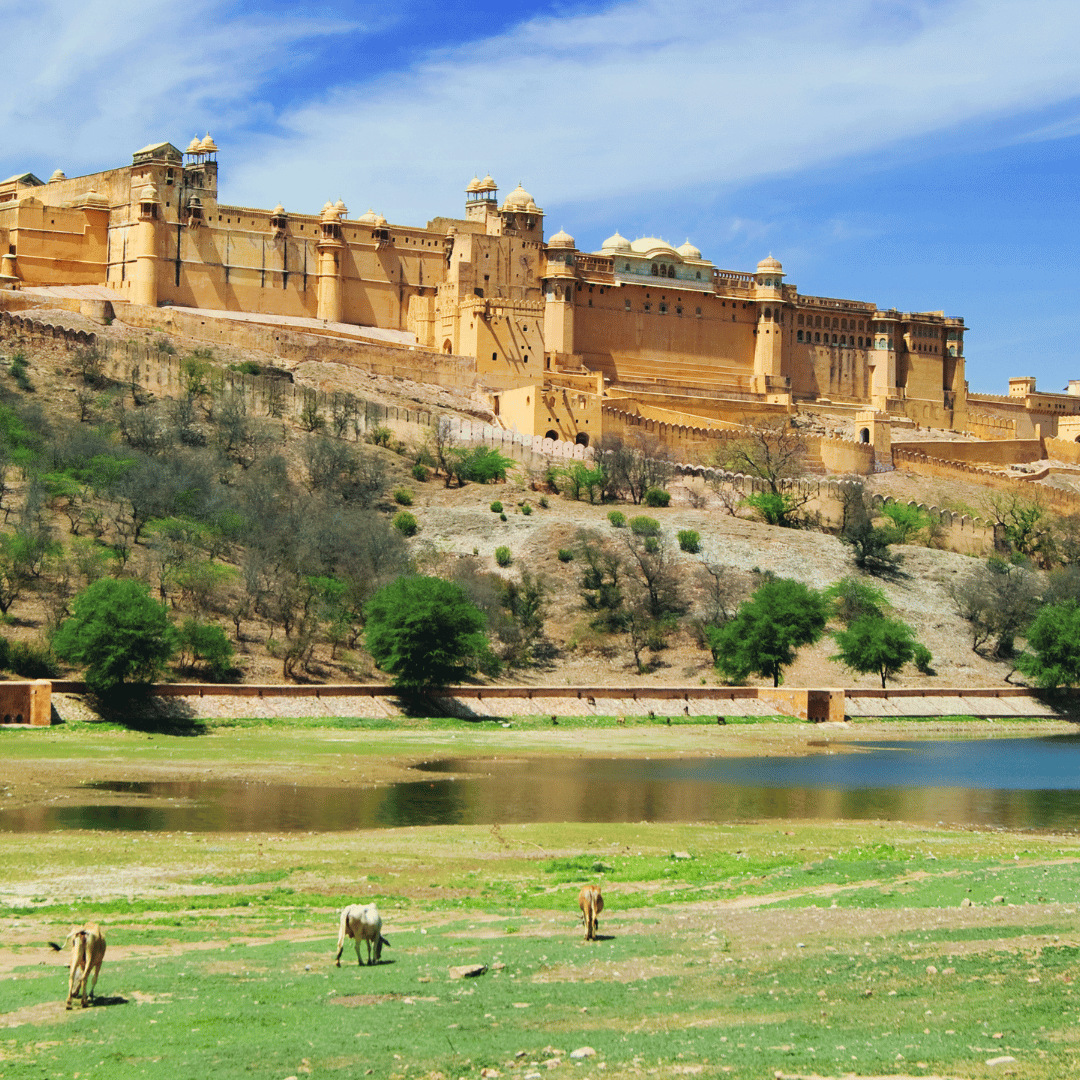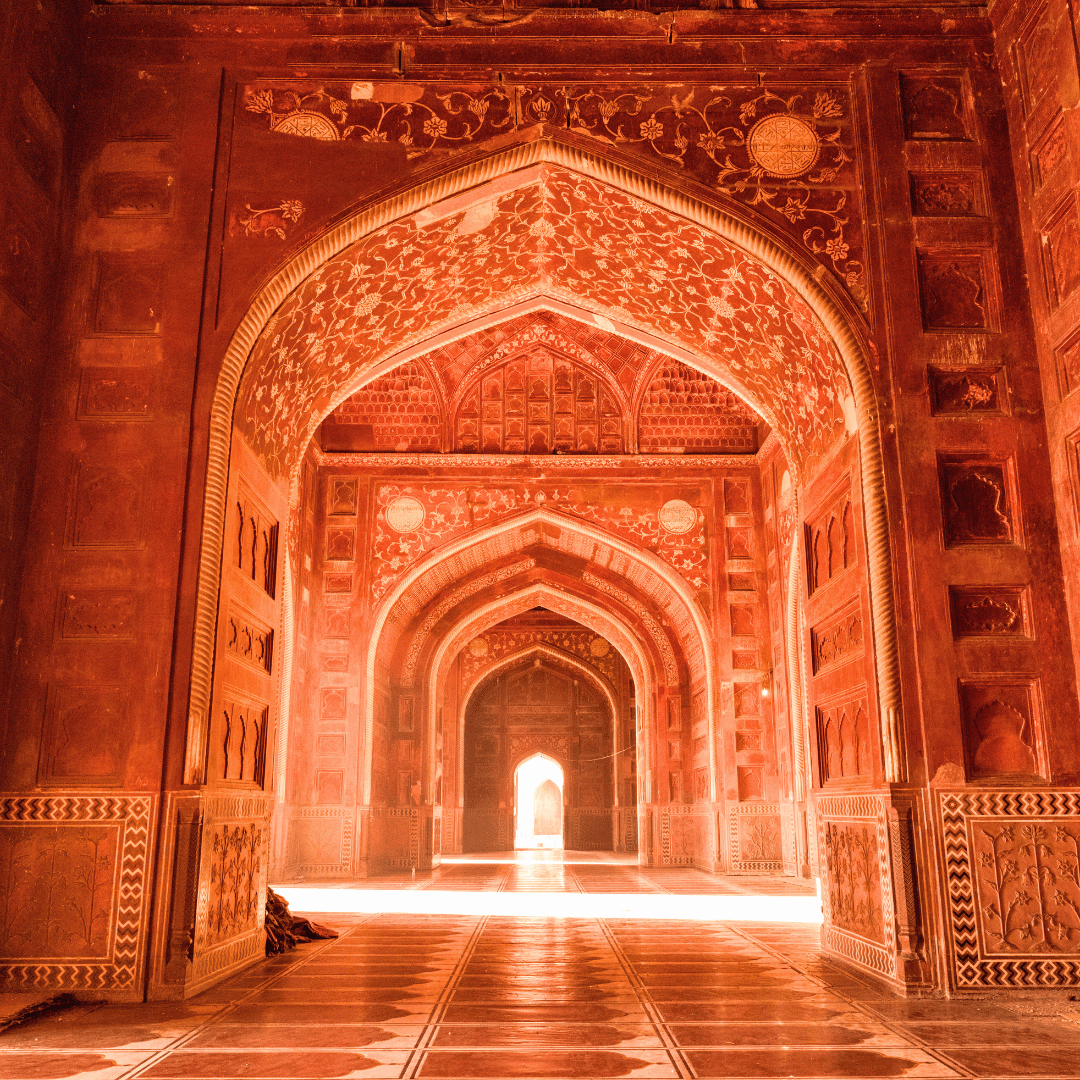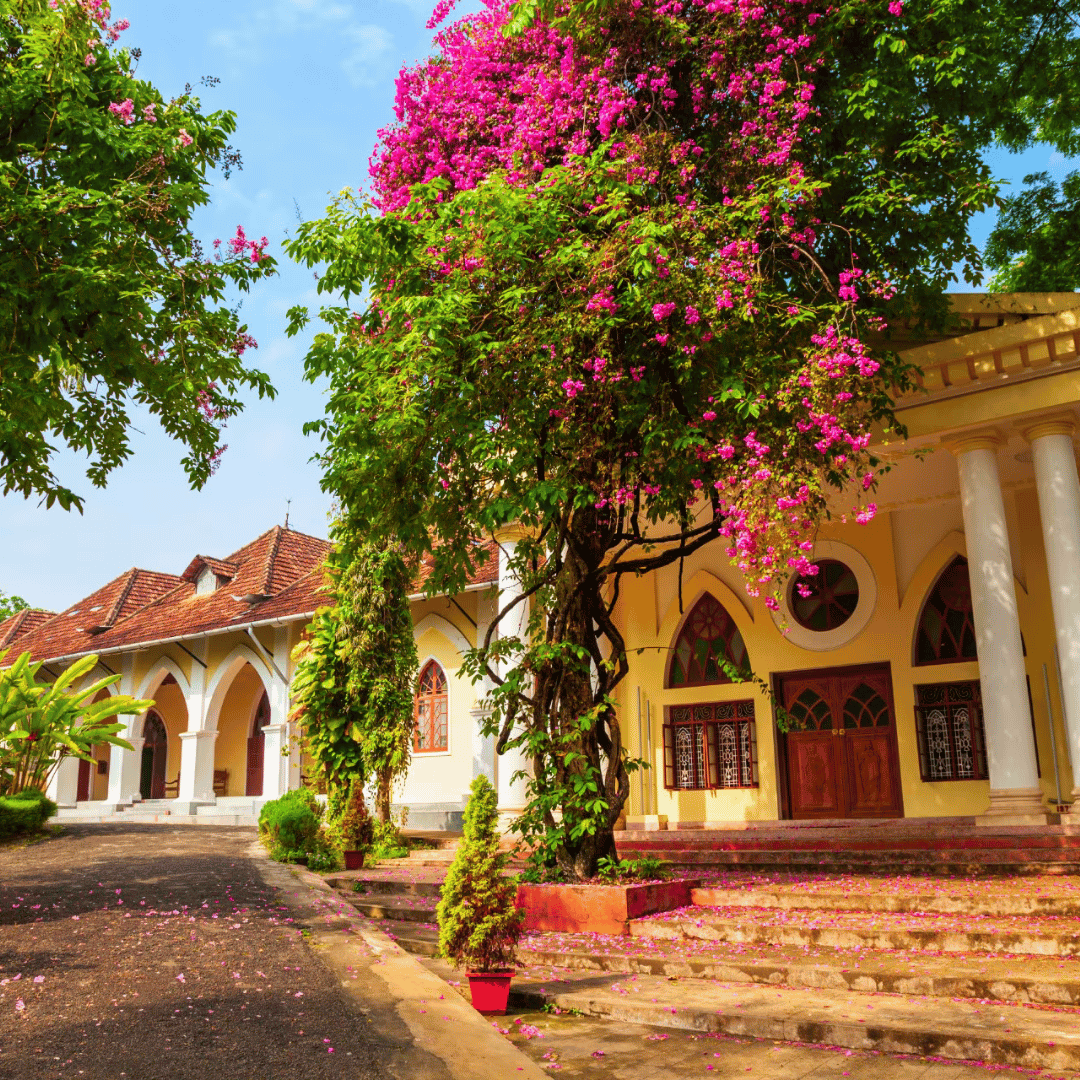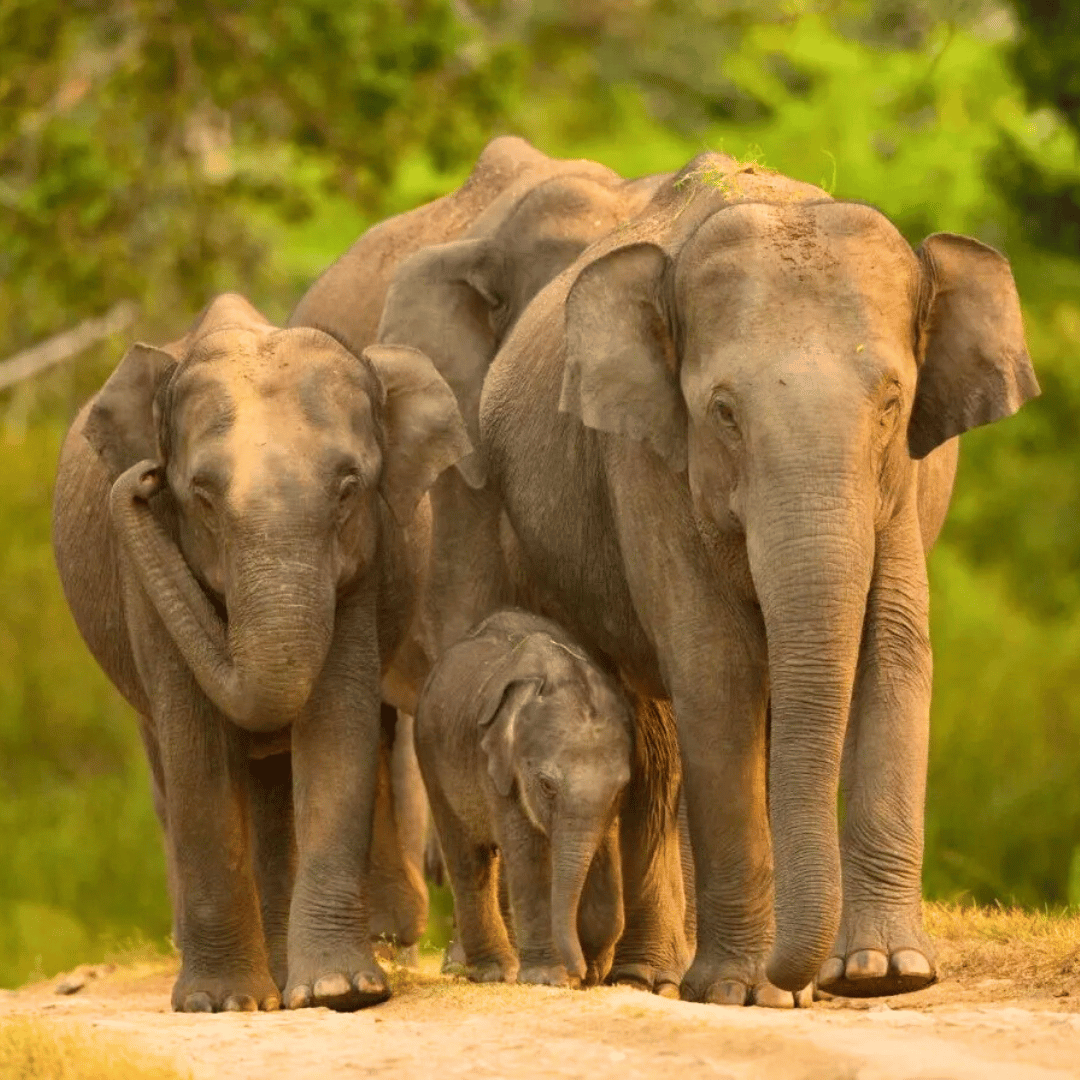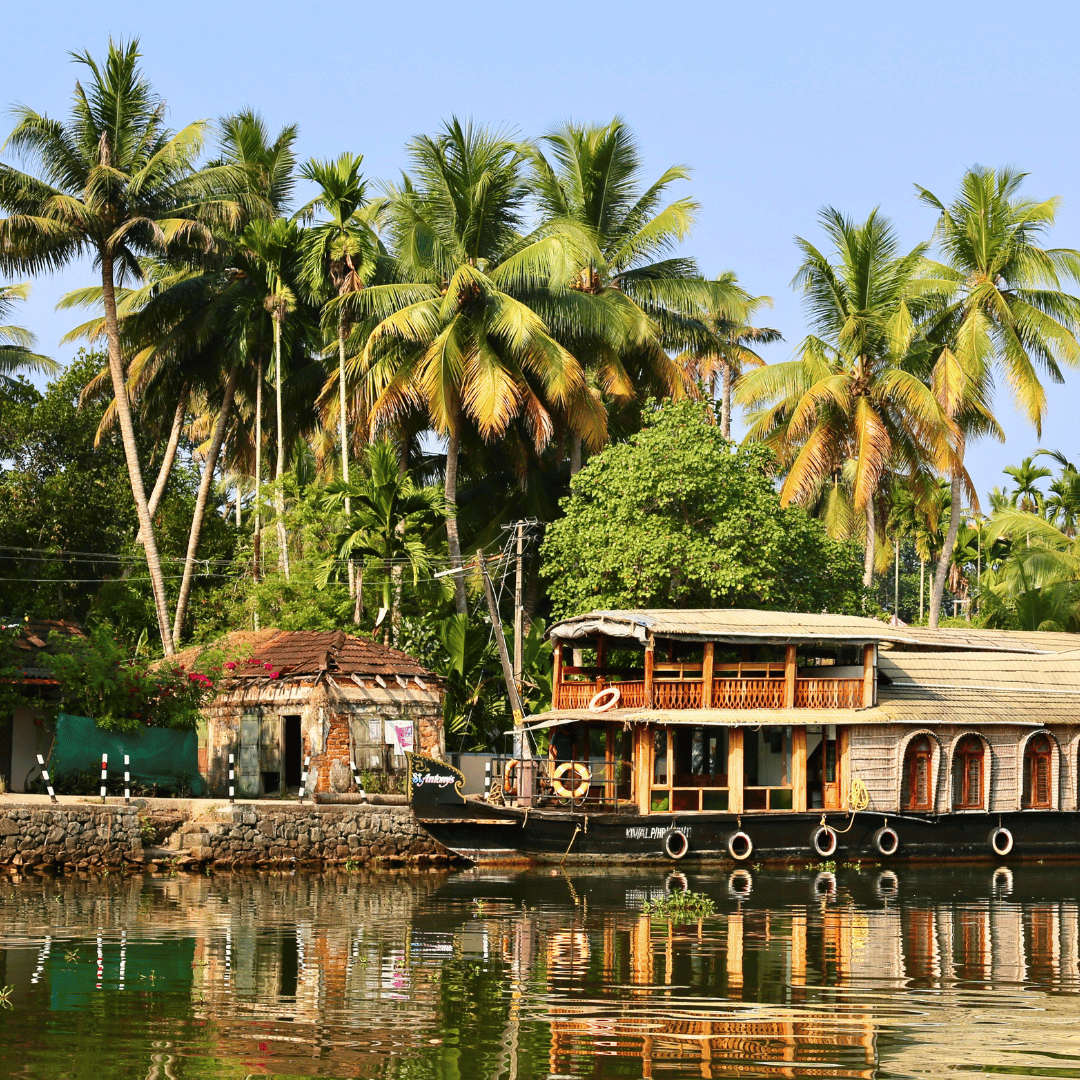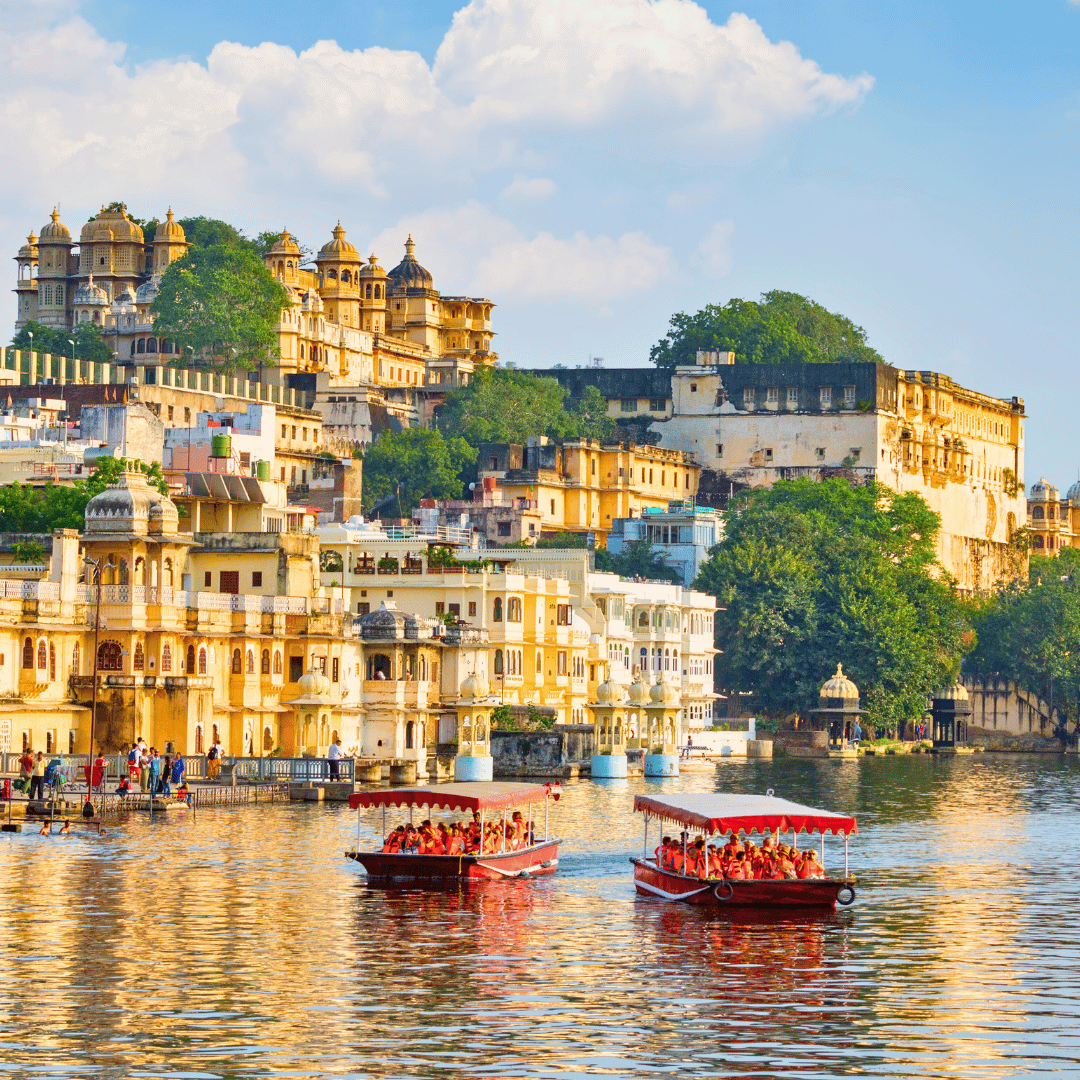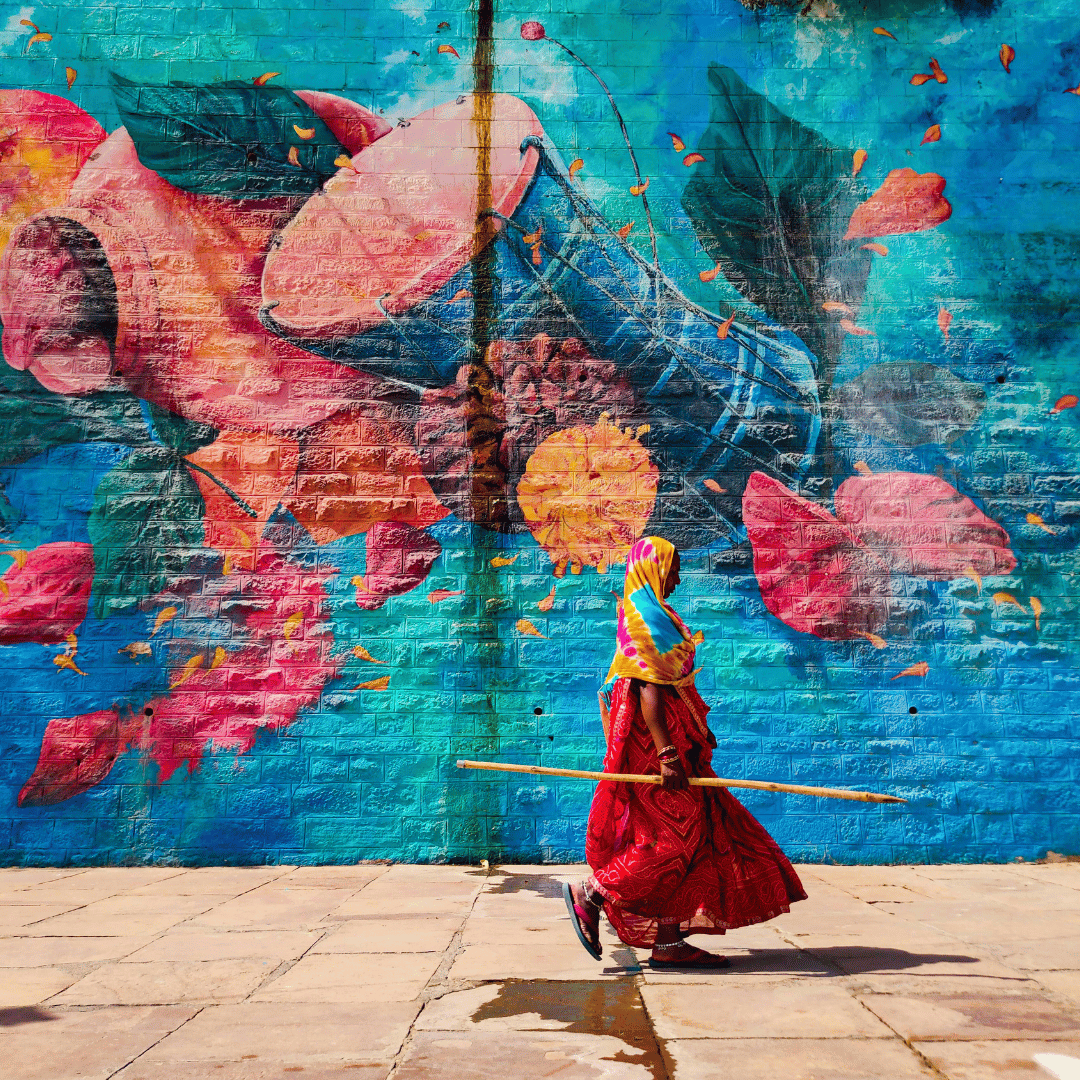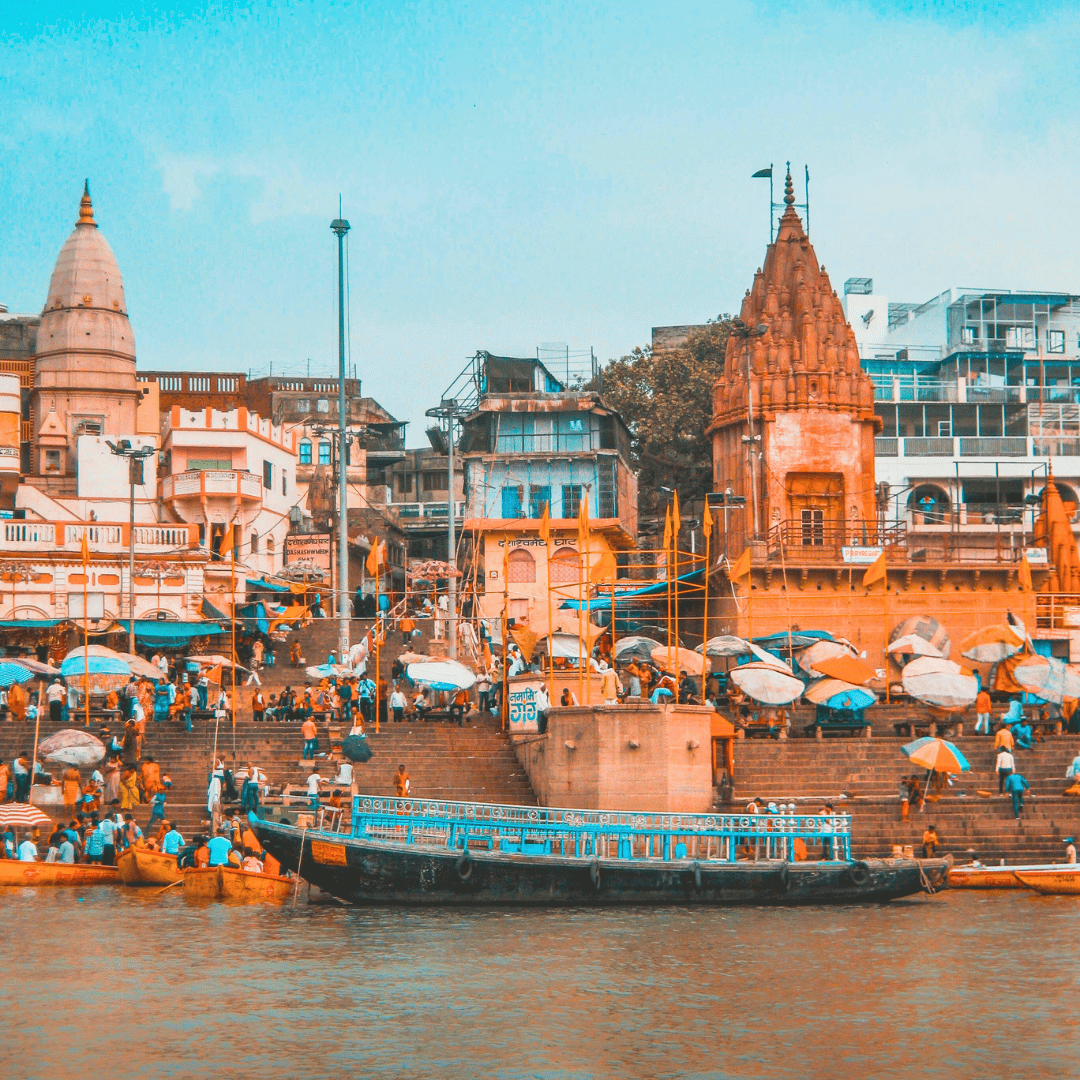Central North India Tour Itinerary
-
Welcome to Delhi! Upon arrival, you’ll be greeted and transferred to your hotel. Delhi is a city of contrasts, with two distinct parts: Old Delhi and New Delhi. Old Delhi, with its winding lanes, bustling bazaars, and historical landmarks, retains much of its medieval character, offering a fascinating glimpse into the past. The architecture, the vibrant street life, and the centuries-old monuments such as the Red Fort and Jama Masjid, transport you back in time. On the other hand, New Delhi presents a modern face, with sleek high-rise buildings, contemporary shopping malls, and wide, tree-lined avenues designed by the British architect Edwin Lutyens. While parts of the city reflect global modernity, the areas designed by Lutyens maintain a certain colonial charm, with grand government buildings and spacious gardens.
Over the next few days, you'll have the opportunity to explore both Old and New Delhi, experiencing the unique blend of history, culture, and modernity that defines this vibrant metropolis. Whether you’re wandering through the bustling streets of Old Delhi or admiring the grandeur of New Delhi’s architecture, there’s always something captivating to discover.
-
Spend a full day exploring Delhi today, starting with a visit to Gurudwara Bangla Sahib, a prominent Sikh temple that offers a unique and powerful experience. While not on the typical tourist path, it’s one of our favourite spots in the city. The temple is a place of great spiritual significance, and you’ll have the opportunity to visit the main prayer hall, where the stirring sounds of the Ragi's devotional singing fill the air. Afterward, take a tour of the temple's kitchen, known as the ‘Langar’, where hundreds of meals are served each day to devotees and visitors, regardless of their background. This selfless service is a testament to the Sikh values of community, equality, and compassion.
Next, head to Jama Masjid, India’s largest and most impressive mosque, located in the heart of Old Delhi. Admire the mosque’s striking architecture, particularly its two towering minarets that are frequently featured in photographs of the city. The mosque offers a peaceful retreat from the busy streets, and you’ll have time to take in its grandeur and learn about its rich history.
In the afternoon, embark on a guided exploration of Shahjahanabad, the old walled city of Delhi, commonly known as Old Delhi. Wander through the chaotic, narrow lanes of Chandni Chowk, a bustling market that has remained largely unchanged for centuries. Here, you’ll experience the vibrant atmosphere of one of Delhi’s oldest commercial hubs. You can visit the bridal street, where women shop for colourful lace, ribbons, and accessories, and then head to Khari Baoli, one of Asia’s largest wholesale spice markets. It’s the perfect place to shop for saffron, dried fruits, nuts, and spices, while inhaling the intoxicating aromas that fill the air.
As you explore Old Delhi, you’ll encounter a vibrant mix of street food stalls, beautifully decorated shops, and hawkers selling everything from colourful bags and clothes to jewellery and souvenirs. The narrow alleys are teeming with people, creating a lively, almost overwhelming atmosphere that reflects the heartbeat of the city. It’s a fascinating journey through Delhi’s historic past and its dynamic present, offering a truly authentic experience of life in the capital.
-
Today, you’ll have a vehicle at your disposal along with a knowledgeable local guide, allowing you the flexibility to choose your own adventure around Delhi. If you're looking for inspiration, we’ve put together a suggested itinerary, but feel free to customise it to your interests.
Start your morning with a visit to Humayun's Tomb, a UNESCO World Heritage Site that is renowned for its stunning Mughal architecture. Often considered a precursor to the Taj Mahal, this elegant tomb is set in beautifully landscaped gardens. Take a leisurely walk through the expansive grounds, and marvel at the intricate designs of the tomb itself, a masterpiece of symmetry and grandeur. After exploring the tomb, head just a short drive away to the serene Lodhi Gardens, a peaceful oasis in the heart of the city, dotted with historical tombs. This is a perfect spot for a morning walk or to simply relax amidst nature. If you're in need of a refreshment, there are several charming cafés nearby where you can grab a coffee and take in the surroundings.
Around midday, make your way to the Qutub Minar complex, another UNESCO World Heritage Site, where you'll encounter the tallest brick minaret in the world. The towering Qutub Minar, standing at 73 metres, is a striking example of Indo-Islamic Afghan architecture. As you explore the surrounding ruins, don't miss the famous Iron Pillar, which has defied the effects of rust for over 1,600 years. For lunch, stop at one of the local cafés in Mehrauli, where you can enjoy traditional Indian dishes or fusion cuisine.
After lunch, head towards India Gate, a grand war memorial dedicated to soldiers who lost their lives in World War I. Take a stroll along Rajpath, the ceremonial boulevard, and make your way towards Rashtrapati Bhavan, the official residence of India’s President, for some great photo opportunities. If you’re interested in history or art, consider spending a couple of hours at the National Museum, which houses an impressive collection of artefacts, or visit the National Gallery of Modern Art, showcasing contemporary works from both Indian and international artists.
In the evening, head to Hauz Khas Village, a vibrant area that blends modernity with history. Here, you’ll find trendy cafés, unique boutiques, and ruins overlooking a peaceful reservoir. Explore the medieval complex, and enjoy the charming blend of old and new. To finish the day, treat yourself to dinner at one of the rooftop restaurants, offering not only delicious food but also spectacular views and a lively atmosphere.
Alternatively, if you're looking for a more spiritual experience, visit the Swaminarayan Akshardham Temple, known for its intricate carvings and its spectacular evening light and sound show that brings the temple’s history to life. Or, head to Dilli Haat, an open-air market where you can shop for traditional handicrafts and sample street food from all corners of India.
-
This morning, you’ll be transferred to the railway station in Delhi to catch an early morning train to Lucknow, a journey that will take approximately 6 hours. During the train ride, you'll have the opportunity to relax and enjoy the passing scenery, as you make your way to one of North India's most historic cities. Upon arrival in Lucknow, you’ll be greeted at the station by a local representative and transferred to your hotel.
Lucknow, often referred to as the 'Golden City of the East', has a rich cultural and historical heritage. Once the cultural capital of North India, it was a thriving centre for art, literature, and music, particularly under the rule of the Mughal Empire and later the Nawabs of Awadh. Today, however, Lucknow is perhaps best known for its vibrant culinary scene, particularly its famous kebabs. The city has long been celebrated for its mouthwatering, melt-in-the-mouth kebabs, with recipes that have been passed down through generations, along with other iconic dishes from Awadhi cuisine.
-
This morning, you’ll embark on a guided tour to explore some of Lucknow’s most iconic sights, starting with the Bara Imambara, the British Residency, and the Clock Tower.
The Bara Imambara is a grand and expansive complex that showcases some of Lucknow’s finest Mughal architecture. This remarkable site includes a mosque, courtyards, intricate gateways, and a historic step-well. The central hall of the Bara Imambara is particularly impressive, said to be the largest arched hall in the world without any support beams. The sheer scale and design of this building are an architectural marvel, and it’s a must-see for anyone visiting the city.
Next, head to the British Residency, a poignant reminder of the 1857 uprising. During the rebellion, the British Residency served as a refuge for around 3,000 people who were trapped for months, and it is now a place of historical significance. The ruins still stand as a testament to the bravery and resilience shown during the revolt, with many structures bearing the marks of battle.
Your final stop for the morning is the Clock Tower, an architectural gem that is the tallest clock tower in India. Built during the British colonial era, it is an excellent example of British architectural influence in the country, with its towering presence still dominating the Lucknow skyline.
In the evening, join a local guide for a culinary tour through Lucknow’s vibrant streets and laneways. This experience will take you to several traditional eateries where you’ll get to sample some of the city’s most beloved dishes. Try the famous barbecue tikka, tender kebabs, and other local specialties that make Lucknow a foodie haven. As you wander through the bustling streets, your guide will share insights into the history and culture behind the city’s rich culinary traditions, making for a delicious and informative end to your day.
-
You have the morning free to enjoy at your leisure. Whether you prefer to relax at your hotel or explore the local area at your own pace, the morning is yours to savour.
In the afternoon, you'll join a fascinating Heritage Walking Tour, which will take you through the maze of narrow lanes and bustling alleyways in the Chowk district, the historic heart of old Lucknow. As you wander through this vibrant area, your guide will share stories about the city's rich history, allowing you to immerse yourself in its culture and traditions.
Along the way, you'll have the chance to witness some of Lucknow's unique and traditional crafts. Watch skilled artisans at work as they demonstrate the intricate process of indigo block printing, a centuries-old technique that produces stunning patterns on fabric. You’ll also learn about Unani medicine, an ancient system of healing that has been practised in the region for centuries. Additionally, you'll have the opportunity to see vark making - an art form that involves creating delicate edible silver foil, often used in Indian sweets and decorative food presentations.
-
Early this morning, you’ll be transferred to the railway station to catch your train to Varanasi, one of India’s most iconic cities. After a scenic journey, you’ll arrive in Varanasi, where a local representative will meet you and transfer you to your hotel.
Known as the City of Light, Varanasi is considered the spiritual capital of India for Hindus. Located on the sacred banks of the Ganges River, the city is a major pilgrimage destination, attracting devotees from across India and the world who come to bathe in the holy river and seek spiritual solace. The ghats (steps) that line the riverbanks are home to numerous temples and shrines, and they provide the perfect vantage point to witness the daily rituals and vibrant life that revolve around the river. From people washing in the sacred waters to laundry being done in the open air, there’s an undeniable sense of devotion in the air. Along the ghats, you’ll see a variety of powerful and sacred ceremonies performed, including the famous Ganga Aarti, a devotional ritual that pays homage to the river goddess.
In the late afternoon, a local guide will take you on a boat ride along the Ganges, offering a unique perspective of the city as the sun begins to set. From the water, you'll have a front-row seat to witness the mesmerising evening Aarti ceremony. This uplifting ritual involves the use of fire and other sacred offerings, performed with grace and devotion by priests and accompanied by chanting and music. The sight of the flames flickering against the backdrop of the river, along with the sound of mantras, creates a deeply spiritual atmosphere, making this a truly unforgettable experience.
-
This morning, set off on a walking tour of Varanasi with a knowledgeable local guide who will tailor the tour to your personal interests. You could choose to delve into the ancient pathways that lead to the city's historic temples, wander along the oldest ghats, or immerse yourself in the lively atmosphere of the bustling city bazaars. If you're keen to explore the more intimate side of Varanasi, you may prefer to navigate the winding laneways that lead to Bengali Tola, a street steeped in history and known for its strong Bengali influence.
For those with an interest in history and culture, a visit to the Bharat Kala Bhavan Museum at Banaras Hindu University is highly recommended. This museum houses an extensive collection of art, showcasing ancient sculptures, paintings, and textiles that reflect the rich cultural heritage of Varanasi and the surrounding region. Alternatively, you could explore the Ramnagar Fort, located on the eastern bank of the Ganges River. This historic fort features an intriguing museum that houses a variety of artefacts, and from its grounds, you’ll enjoy picturesque views of the river and the city beyond.
The afternoon is yours to enjoy at your leisure. You might choose to relax at your hotel, perhaps indulging in a quiet moment by the river, or explore more of the city at your own pace.
-
Today, you have a full day to explore Varanasi at your own pace, with a range of options to choose from depending on your interests. One possibility is a day trip to Chunar Fort, located about 40km from the city. This historic fort, perched on the banks of the Ganges, has witnessed the reign of numerous dynasties and played a significant role in the region’s history. The fort offers panoramic views of the river and surrounding landscape, making it an excellent spot for photography. You can also explore its ancient battlements, venture through its underground passages, and visit the nearby old British cemetery, where you can gain further insight into the fort’s colonial past.
Alternatively, consider visiting the tranquil village of Sarnath, just a short drive from Varanasi. Sarnath is one of the holiest Buddhist sites, as it is believed to be the place where Buddha delivered his first sermon. Here, you can explore the Dhamek Stupa, a large and impressive monument, as well as the ruins of ancient monasteries. A visit to the Sarnath Archaeological Museum is also highly recommended, where you’ll find an extensive collection of Buddhist artefacts, including the famous Ashoka Pillar’s lion capital, which is considered one of India’s most important archaeological discoveries.
For a unique experience, you might want to try a silk weaving workshop in the heart of Varanasi's famed weaving district. This is a wonderful opportunity to learn about the traditional techniques that go into creating the city’s famous Banarasi saris. These intricately woven textiles are world-renowned for their craftsmanship and beauty. During the workshop, you’ll not only gain insight into the centuries-old weaving process but also have the chance to try your hand at the loom, making it an immersive way to connect with one of the city’s most celebrated crafts.
-
After a leisurely breakfast, you’ll be transferred to the airport for your flight to Khajuraho. Upon arrival, you’ll be greeted and taken on an exploration of the world-renowned UNESCO World Heritage-listed Khajuraho Group of Monuments. These remarkable sandstone temples are famous for their soaring vertical spires, and their intricate sculptures that depict various aspects of ancient Indian life, both secular and spiritual. The temples, built between the 9th and 12th centuries, offer a unique insight into the religious and cultural practices of that time. Among their most famous features are the extraordinary erotic carvings, which are thought to symbolise the diverse facets of human existence, including love, life, and the cosmos.
After immersing yourself in the history and beauty of the temples, you’ll take a short 30-minute drive to Sarai at Toria, your home for the next three nights. This eco-friendly resort is beautifully situated on the banks of the Ken River, surrounded by lush countryside and agricultural fields. With just eight spacious independent cottages nestled in the heart of stunning grasslands, Sarai at Toria offers a tranquil and intimate setting. The area is rich in birdlife and wildlife, providing a perfect spot for nature lovers to relax and unwind.
Once you’ve checked in and settled into your cottage, you’ll have the rest of the day to relax and enjoy the peaceful surroundings.
-
You have the entire day at your leisure to enjoy the wide range of activities available at Sarai at Toria. Begin your day with a serene sunrise boat ride on the Ken River, where you can spot local wildlife such as birds and perhaps even a few crocodiles, all while soaking in the peaceful and picturesque surroundings. The early morning light on the river is a magical time to experience the natural beauty of this tranquil region.
Later, consider a guided walk to a nearby village to experience rural life firsthand. This will give you the chance to learn about local farming practices and gain insight into the traditional ways of life in the area. You’ll have the opportunity to interact with local villagers, observe their daily routines, and understand the agricultural techniques they use to cultivate their crops.
For those with an interest in wildlife and nature, a nature walk along the riverbanks is highly recommended. This walk offers excellent opportunities for birdwatching, as the area is home to a variety of bird species, particularly raptors. If you prefer a slower pace, you can unwind on the day beds on your private verandah or relax under a tree, taking in the serene views of the river and the surrounding countryside.
For wildlife enthusiasts, a visit to the nearby Panna Tiger Reserve is a must. Often considered a hidden gem, Panna is one of India’s most scenically dramatic national parks. It offers excellent opportunities for spotting a wide range of animals, including raptors, ungulates, and small carnivores. The park is also home to leopards and tigers, and it provides an incredible chance to see these magnificent creatures in their natural habitat.
Food is another highlight at Sarai at Toria, where fresh, organic ingredients are used to create delicious, home-cooked meals. Enjoy a leisurely three-course lunch under the shade of a neem tree in the kitchen garden. As you savour the rich, thoughtfully prepared flavours, you’ll appreciate the care that goes into each dish, making for a truly memorable dining experience.
-
After a hearty breakfast, set off on an excursion to the historic Ajaygarh Fort, located just an hour's drive along quiet rural roads. The journey will take you through scenic landscapes, offering a peaceful and picturesque drive. Upon arrival at the base of the fort, prepare for a climb of approximately 500 steps to reach the fort's entrance. As you ascend, you’ll encounter intricate sculptures carved into the cliffside, providing an intriguing glimpse into the region’s rich artistic heritage and cultural history. The climb is both rewarding and scenic, with each step bringing you closer to the fort’s impressive summit.
At the top, you’ll be rewarded with breathtaking panoramic views of the surrounding landscape, including the charming town of Ajaygarh and the majestic Ken River flowing through the valley below. The sight from the summit offers a stunning perspective on the region's natural beauty and strategic positioning.
Ajaygarh Fort, constructed during the reign of the Chandela dynasty, once served as their capital in their later years. Although the fort originally had five gates, only two remain today. As you explore its historic walls, you’ll discover two temples and two rock-cut tanks, named Ganga and Yamuna, which once served as vital water sources for the fort’s inhabitants. Within the fort’s perimeter, you can also find the ruins of a temple dedicated to Raja Parmardi Deva, as well as three Jain temples built in the renowned Khajuraho style. The architecture of the fort and its strategic location atop the Vindhya Hills offer a clear reflection of its historical importance as a stronghold and a significant military base during times of invasion.
After your visit to Ajaygarh Fort, return to Sarai at Toria, where you can spend the rest of the afternoon at your leisure.
-
After breakfast, embark on the 5-hour drive to Orchha, a historic town renowned for its impressive collection of 16th and 17th-century palaces, temples, and architectural gems. As you travel through the countryside, you’ll be treated to scenic views, gradually approaching this peaceful town steeped in history. Upon arrival, check into your hotel and take the rest of the day to relax or explore at your leisure.
If you wish to explore the town, a visit to the Orchha Fort Complex is highly recommended. Situated on an island in the Betwa River, the fort complex is a stunning example of Mughal and Rajput architecture. The Raja Mahal within the fort boasts intricate murals and beautiful frescoes, while the Jahangir Mahal, built in 1605, offers a fascinating fusion of Islamic and Rajput styles, with stunning views of the river below. Another highlight is the Ram Raja Temple, a unique temple housed in a former palace, and the only place in India where Lord Rama is worshipped as a king. Nearby, the Chaturbhuj Temple blends both temple and fort architecture, further adding to the region’s architectural diversity.
Along the Betwa River, you’ll find 14 cenotaphs that commemorate the rulers of Orchha. These magnificent structures are designed in the distinctive Indo-Mughal style and serve as an important reminder of the town’s royal heritage. For a more peaceful experience, head to Phool Bagh, a historic garden once used by royalty. This serene spot features fountains and an ingenious cooling system that provided relief from the heat in centuries past, offering a tranquil environment to reflect on the town’s rich history.
This fascinating mix of history, architecture, and natural beauty provides a deeper understanding of Orchha’s cultural heritage. After your exploration, return to your hotel for a relaxing evening, where you can unwind and enjoy the peaceful surroundings of this charming town.
-
Spend the day exploring the nearby towns of Datia and Sonagiri, both rich in history and cultural significance.
Datia, once the capital of Bundelkhand, is a town surrounded by small lakes and known for its striking hilltop palaces. The most famous of these is the palace of Raja Bir Singh Deo, a stunning seven-storey structure built entirely of stone and brick. This architectural masterpiece is widely regarded as one of the finest examples of Bundela architecture, with its intricate carvings, expansive courtyards, and grand design. As you explore the palace, you’ll be able to admire the magnificent views of the surrounding lakes and countryside, making it a perfect spot for photography and appreciating the beauty of the region. The town itself is tranquil and picturesque, with its rich history reflected in the architecture and landscapes that surround it.
Afterwards, head to Sonagiri, a revered pilgrimage site famous for its Jain temples. Situated on a hill, Sonagiri is home to numerous white marble temples scattered across its slopes, each one a testament to Jain architectural beauty and religious devotion. The temples are dedicated to various Jain Tirthankaras and attract devotees from across India. The peaceful, spiritual atmosphere of Sonagiri offers an ideal setting for reflection and quiet exploration, allowing you to experience both the serenity of the landscape and the religious significance of the site. The marble temples, with their intricate carvings and serene surroundings, provide a sense of calm that adds to the spiritual essence of the region.
-
After a leisurely breakfast, set off on the 4.5-hour journey to Fort Rampura, nestled deep within the rugged and scenic Chambal Ravines. This historic 600-year-old fort was originally constructed as a strategic stronghold, designed for defence and military purposes. Over the centuries, however, successive generations of the ruling family transformed the fort into a more liveable space, blending its military origins with the comforts of a home.
Today, part of the fort is still occupied by the descendants of the original ruling family, who have lovingly converted it into an intimate homestay. The homestay offers a rare and authentic opportunity to experience the life and culture of Bundelkhand nobility, providing a glimpse into the feudal past of this region. As you stay here, you’ll have the chance to explore the fort’s unique architecture, from its imposing walls and battlements to its more comfortable living spaces, now enriched by the personal touches of the family.
Staying at Fort Rampura is like stepping back in time, where you can immerse yourself in the rural charm of the area, surrounded by the natural beauty of the Chambal Ravines. This is a place where history, tradition, and hospitality come together, making it a truly one-of-a-kind experience that offers a deep connection to the local culture and heritage of Bundelkhand.
-
Today, immerse yourself in the rich heritage and natural beauty of Fort Rampura and its stunning surroundings. Start your day with an early morning walk through the picturesque Chambal Ravines, heading towards the family’s hilltop temple. This peaceful spot offers panoramic views of the dramatic landscape, providing a perfect opportunity for reflection and a quiet connection to nature.
Afterwards, take some time to relax in the fort’s serene courtyards. You can unwind with a good book in hand, surrounded by the historic walls and tranquil gardens, or treat yourself to a traditional mustard oil massage, an indulgent way to rejuvenate and experience an authentic part of local wellness practices.
For those looking for a bit more adventure or exploration, consider a boat ride on the nearby river. This scenic journey offers a chance to observe the local wildlife in their natural habitat, as well as enjoy the calm and peaceful environment of the river and its banks. The serene boat ride allows you to fully appreciate the beauty of the landscape from a different perspective.
Alternatively, if you’re interested in regional culture and culinary traditions, join a casual cooking class and learn some of the local techniques that have been passed down through generations. Discover the secrets behind Bundelkhand's flavours, using fresh, local ingredients to prepare delicious dishes.
For those with a keen interest in history and architecture, a visit to nearby forts and palaces is a must. These historical sites provide a deeper insight into the area's rich past, offering opportunities to explore grand architectural structures and learn about the stories of the rulers who once inhabited them.
-
After breakfast, set off on the 4-and-a-half-hour drive to Gwalior. As one of the lesser-visited stops on the Gangetic plains, Gwalior offers a chance to experience India beyond its well-known sights and bustling cities.
Gwalior is best known for its magnificent hilltop fort, often referred to as the 'Gibraltar of India'. Built over centuries by different rulers, Gwalior Fort is a sprawling complex featuring palaces, temples, and intricate Jain sculptures carved into the rock. The 15th-century Man Singh Palace, with its vivid blue-tiled façade and underground passages, is a highlight, offering a glimpse into the opulent lives of its former rulers. The fort's panoramic views of the city and its impressive architecture make it a must-visit.
Beyond the fort, Gwalior's old city is home to a wealth of historical sites, including the ornate Jai Vilas Palace, still partly occupied by the Scindia family, and the 9th-century Teli Ka Mandir with its unique Dravidian and North Indian architectural blend. A visit to the tomb of Tansen, one of India's most revered musicians, adds to the city's rich cultural experience. Stopping at Gwalior lets you explore a mix of history, architecture, and a quieter side of India.
-
Gwalior’s two main attractions are its magnificent Fort and the grand Jai Vilas Palace. If you didn't have the opportunity to explore them yesterday, today is the perfect chance to do so. Start your morning by visiting the iconic Gwalior Fort, one of India’s largest and most historically significant forts. Your local guide will provide fascinating insights into the fort’s rich history, including its architectural marvels, ancient temples, and panoramic views of the surrounding landscape.
Afterward, head to the opulent Jai Vilas Palace, a stunning example of 19th-century architecture. The palace, once the residence of the Scindia family, is known for its luxurious interiors, which include ornate chandeliers, intricate carvings, and a blend of European and Indian design. Take time to explore the grandeur of the palace’s rooms, and learn about the royal family’s lifestyle and history.
In the late afternoon, you’ll be transferred to the railway station to catch a train to Jaipur, the Pink City. The train journey provides a comfortable and scenic way to travel to your next destination. Upon arrival in Jaipur, you'll be met by a representative and transferred to your hotel, where you can settle in and enjoy the rest of your evening at leisure, preparing for the exciting exploration of Jaipur ahead.
-
Jaipur, the capital of Rajasthan, is famously known as the 'Pink City' due to its distinct pink-hued buildings. Begin your exploration of this vibrant city with a guided walk through its lively markets, led by an expert local guide. As you wander through the bustling laneways, you'll discover unique local businesses, vibrant street life, and sample some of Jaipur's favourite foods along the way, including its iconic kulfi. This delicious ice cream, flavoured with pistachio and saffron, is a must-try treat that reflects the city's rich culinary heritage.
The afternoon is yours to enjoy at your own pace. You might decide to delve further into the market, where you can experience more of Jaipur’s bustling atmosphere and pick up local handicrafts and souvenirs. Alternatively, explore the city's modern boutiques and stores, offering a mix of traditional and contemporary fashion, jewellery, and homeware. If you prefer a quieter afternoon, you can simply unwind and relax at your hotel, soaking in the ambience of this dynamic city before heading out for more adventures.
-
Today, you have the option to visit the magnificent Amber Fort, located about a 45-minute drive from Jaipur. Once you arrive, you’ll take a jeep ride up to the top of the fort, where you can explore the impressive Ganesha Pol, or Elephant Gate, and marvel at the stunning Palace of Mirrors, a true highlight of the fort. The intricate mirror work and decorative elements within the palace are a testament to the architectural brilliance of the time. As you explore the fort’s sprawling courtyards, ornate palaces, and ramparts, you’ll be transported back in time to an era of royal grandeur.
Alternatively, if you prefer to spend the day exploring Jaipur itself, you can visit some of the city’s other remarkable landmarks. The City Palace, a beautiful blend of Mughal and Rajasthani architecture, offers a glimpse into Jaipur's royal past, with its courtyards, museums, and courtyards adorned with intricate artwork. Nearby, the Hawa Mahal, or Palace of Winds, is an iconic pink sandstone structure with a series of small windows designed to allow royal women to observe street life while remaining unseen. For a deeper understanding of Jaipur’s astronomical history, visit Jantar Mantar, an 18th-century observatory home to an impressive collection of large-scale instruments used for measuring time, predicting eclipses, and observing celestial bodies.
The choice of activities is entirely up to you, giving you the flexibility to explore Jaipur's rich cultural and architectural heritage at your own pace.
-
Today you will be transferred to the airport for a flight to Mumbai or Delhi and connecting international flight.
The India Unbound Difference
At India Unbound, we’ve spent twenty years on the ground in India, learning all about its intricacies, landscapes and cultures. We use this first-hand knowledge to carefully curate travel itineraries for our guests, and are proud to be a reputable private touring specialist. In addition, our team of local partners offer guarantees of punctuality, quality and service. All of our India private tour itineraries include all accommodation mentioned, daily breakfasts and other meals as specified, all transfers, touring and sightseeing by air-conditioned Toyota Innova or similar vehicle, and internal flights as outlined in the itinerary. Private activities and sightseeing with English-speaking local guides are included, along with entrance fees, drinking water in the vehicle, and all vehicle-related charges such as tolls, parking fees, and taxes. The cost does not include visas or international flights, personal expenses such as drinks and laundry, meals and activities not specifically listed as included, or camera fees, which are rarely applicable. Prices are listed in Australian dollars and are based on per person, twin share. Please note that these may fluctuate depending on the time of year you’re looking to travel, and the type of accommodation you prefer.

